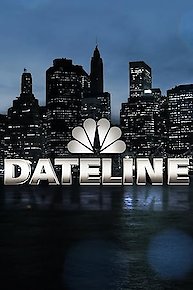
White House White Board
Where to Watch White House White Board

White House White Board was a digital series launched by The White House in 2011. An innovative attempt to break down complex policy issues into simple, easy-to-understand terms using a white board, this series leveraged the reach of the internet and social media to directly engage the American public.
The concept of the show was straightforward but impactful. Each episode featured a White House staffer explaining a specific policy, legislation, or a pertinent issue on a white board. The speakers, who were often experts in the discussed subject matter or played a significant role in the formulation of the related policy, used diagrams, flowcharts, and occasionally humor to elucidate often-complicated concepts in layman’s terms.
Despite being set in the confines of White House walls, the show was anything but stilted and formal. It embraced a conversational tone, encouraging viewer interaction. The episodes averaged just a few minutes each, making them easily shareable snippets that fostered democratic discourse on significant policy matters.
White House White Board episodes ranged from tackling numerous economic issues such as tax cuts, job creation, and deficit reduction, to explaining more universal themes like education reform, healthcare, and clean energy. This array of topics allowed a broad cross-section of American society to understand vital domestic and foreign policy decisions vividly. The show served to bridge the gap between complex government procedures and the average American citizen.
Perhaps one of the most influential aspects of the White House White Board was its role in promoting transparency and accountability in governance. By explaining the rationales behind significant policies and legislation, the series shed light on what would otherwise remain government's behind-the-scenes decision-making. It functioned as an informative tool catering to the growing demand for open governance and citizen involvement.
President Obama's then-economic advisor, Austan Goolsbee, kicked off the series with an episode on the President's tax cut compromise. Goolsbee’s confident and accessible presentation was well-received, setting the tone for future episodes. Other prominent appearances on the show included Vice President Joe Biden, who explained the importance and impact of job investments, and former Secretary of State Hillary Clinton, who discussed the significance of free trade agreements.
The White House White Board also incorporated innovative digital strategies to accentuate its reach and relevance. For instance, the series encouraged social media users to ask questions or suggest future topics. Selected questions were answered in subsequent episodes, further encouraging viewer participation and engagement. The series highlighted how public institutions can use digital tools to engage audiences effectively, inviting them to participate in national discourse.
Despite its short run time, the show’s success lay in its ability to break down complicated policy matters into easy-to-understand content, further engaging viewers through its dynamic approach and compelling presentations. However, the White House White Board was more than just an educational series – it represented an ambitious attempt by the government to harness digital platforms for open, transparent, and communicative governance.
In summary, the White House White Board from 2011 was an integral part of The White House's digital strategy, designed to break down complex policy matters and involve the American public better in understanding these issues. The show distinguished itself with its simplicity, directness, and an innovative, participatory approach synced with the digital age. Through this series, the White House managed to foster better citizen-government engagement while promoting more in-depth knowledge about pertinent policy matters.
























